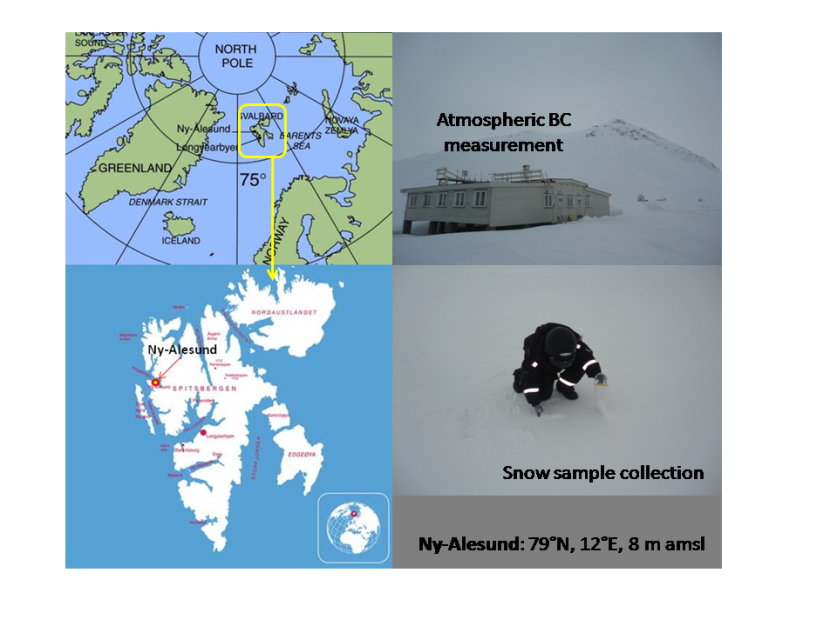- Screen Reader Access
- Skip to : main content / navigation
- Text Size
- Home
- Sitemap
- Contact us
- हिंदी
Precipitation, atmospheric aerosols and its characterization as well as the role of aerosols/precursor gases in direct radiative forcing over Arctic region at Ny-Ålesund
Precipitation in form of snowfall and rainfall is an important part of the hydrological system and modulates the energy and water cycle, ecosystem and also has large socio-economic impacts. Though caused by regional processes mainly, knowledge of precipitation and its underlying processes, its high temporal and spatial variation, can provide important leads to global energy and water cycle studies. The fresh water input through precipitation in the glaciers and ice caps and its impact on their mass balance is an important issue to be addressed. Unlike the rest of the globe, polar precipitation is shallow and of low intensity with mostly dominated by solid precipitation. Small changes in the atmospheric parameters can significantly influence the precipitation process. Besides, under the rapid and most significant impacts of global warming that Arctic is exhibiting, quantification of changes in precipitation rate and its underlying processes, precipitation characteristics are some of the striking issues that are to be addressed for better and more accurate prediction of the future climate. In order to achieve this goal, a Micro Rain Radar was installed at Himadri which collects precipitation characteristics at1 minute interval and will help to understand the high latitude precipitation characteristics. Combining this information with an accumulation rate will give the information of falling precipitation. The instrument is switched on for continuous data collection and can be accessed from NCPOR.
Atmospheric aerosols influence regional and global climate through direct and indirect processes. While polluted continental locations are more prone to drastic changes in anthropogenic activities, the far remote Arctic, Antarctic and high altitude Himalayas are also not free from the dramatic influence of these suspended particulates, primarily through long-range transport from source regions outside these regions. The transport of aerosols from low latitude regions to the Arctic atmosphere and subsequent deposition in Arctic snow/ glaciers and ice sheets has been a major scientific concern in the recent years. In addition, Arctic is considered as net sink for black carbon (deposition > emission). Viewed in the above backdrop, atmospheric aerosol measurements have been carried out at Norwegian Arctic location Ny-Alesund since 2010 emphasizing on scattering and absorption properties of aerosols, their physical dimensions (e.g., mass concentration, size distributions etc.), in addition to the columnar optical properties.

Fig.1: The geographic position of Ny-Alesund (79°N, 12°E, 8 m amsl) in Arctic (left panels), along with the atmospheric BC observatory at Gruvebadet (top-right) in Ny-Alesund and the surrounding snow sampling locations at the bottom.
The impact of atmospheric warming due to the presence of BC on the regional climate and hydrological cycles is an increasing concern of scientific and social importance. At the same time, the deposition of BC on highly reflecting surface (like snow or ice) exacerbate warming and glacier/snow melting due to the absorption of more sunlight, thus reducing the surface Albedo. Hence the field experiment initiated during the 2013-14 expeditions had simultaneous measurement of Black Carbon (BC or soot) aerosols both in the atmosphere and snow surface medium.